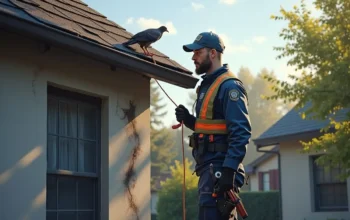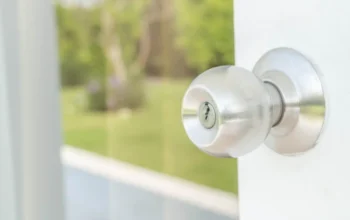Common Home Security Myths You Should Stop Believing
Misleading home security myths often misguide homeowners in effectively protecting their property. Many of us assume we’re doing everything correctly, but misleading tales and half-truths can prevent us from giving our homes the security they actually need. Sometimes, people rely on incomplete information about locks, alarms, and neighborhood safety. By clearing up these widespread misconceptions, you get the chance to make well-informed decisions and truly safeguard your household without wasting time or money.
It’s easy to see how tall fences or friendly dogs create a sense of comfort. Yet, myths about burglary risks and how intruders operate still persist. Some believe motion lights alone will scare off thieves, while others are convinced that their neighbors are the best defense if something suspicious happens. The reality is that security requires multiple layers of protection. In the following sections, we’ll highlight myths that deserve a second look and pave a path toward more reliable home security.
Myth #1: Obvious Security Features Scare Away All Intruders
It’s tempting to assume that if would-be burglars see a security camera or a “Beware of Dog” sign, they’ll run for the hills. While visible deterrents can certainly help, they don’t guarantee intruders will back off. Some criminals notice cameras but still try to slip by undetected, and others have learned to override poorly secured systems.
Over-reliance on these obvious features can breed a false sense of confidence. Instead, combine visible measures with less noticeable approaches such as secure locks, durable doors, and robust window reinforcements. Layered security, which might also include hidden cameras or a well-monitored alarm system, helps keep your property safer than flashy devices alone ever could.
Myth #2: A Dog Is Enough
Having a dog that barks at strangers may seem like a powerful form of home protection. Many families feel that a furry companion alone can deter any intruder. While dogs can act as an early warning system, they cannot replace comprehensive security measures. Some intruders may use treats or commands to distract or calm a dog, and larger dogs could even get injured in an altercation.
Making sure you have reliable locks and even a home security system in addition to your canine friend ensures overlapping layers of safety. If you’re looking for ways to protect your family further, consider reviewing professional monitoring options or seeking expert security advice that complements your pet’s loyal watch.
Myth #3: Believing Home Security Systems Are Too Pricey For Ordinary Families
Plenty of people avoid home security systems because they think the monthly bill is out of their reach. Others worry about equipment costs or installation fees. The truth is that modern technology has transformed the security market, making it less expensive and more user-friendly than ever. Advances in smart home security make it possible to set up a cost-effective system with cameras, door sensors, and alerts sent straight to your phone.
Hidden Costs? Not Necessarily
Some might worry there are hidden fees baked into these systems. However, many reputable providers offer packages for different budgets. Even if you aren’t prepared to spend big on professional monitoring, you can often find scaled-down plans that use a smartphone app to notify you about possible intrusions. This flexibility allows you to pick and choose the devices and services you actually need, ensuring there’s an option for nearly every household.
Myth #4: My Neighborhood Is Safe, So I Don’t Need Extra Protection
Feeling secure in a quiet neighborhood is normal, but it can become a major blind spot. Crime doesn’t only happen in busy city centers or high-risk districts. Burglars sometimes choose low-crime areas because they expect fewer security measures and more complacent residents. Even if you’ve never experienced a break-in, it doesn’t mean your house is invisible to criminal elements.
One step toward improving your defenses is exploring new alarm system features that can detect door or window tampering. You might also consider installing motion sensors in low-visibility areas, like side yards or back entrances. Taking these simple precautions helps reinforce the idea that a safe neighborhood shouldn’t lull you into neglecting crucial security measures.
Myth #5: I Only Need Security When I’m On Vacation
Some homeowners assume that a temporary boost in security is enough while they’re away on a trip. They may ask neighbors to pick up mail, set timers on lights, or lock everything up extra tight. Although these steps are smart, they’re not sufficient for year-round peace of mind. Burglaries can happen on a random weekday when you’re simply at work or running errands. Thieves often seek quick entrances and exits, so they don’t need you to be gone for days.
Security Is A Day-To-Day Matter
Staying on top of everyday security ensures that if someone tries to break in, they can’t do it easily. Lock your doors even if you’re just across the street, and ensure your windows remain secured. Install a home security system that keeps watch when you’re sleeping, at the office, or picking up the kids. When safety is a habit rather than a vacation-only concern, you’re better prepared for unexpected situations.
Myth #6: DIY Security Upgrades Are All You Need
Plenty of homeowners believe that swapping out a few door locks or adding a camera near the front porch solves everything. While do-it-yourself upgrades can offer base-level benefits, they often lack the cohesion of a well-designed system that covers blind spots. A camera on your porch won’t help if an intruder targets a back window or pries open a side door.
Choosing a more integrated home security system means you have multiple devices communicating with each other. For instance, a motion sensor in your backyard could trigger nearby cameras to start recording. That video feed is then accessible right from your phone in real time. By coordinating your safety measures, you gain a much clearer picture of what’s happening around your property.
Myth #7: Burglars Strike Randomly, So There’s Not Much You Can Do
It’s true that some break-ins appear random. But in many cases, burglars scope out the target beforehand, looking for weaknesses like easy-to-open windows, poorly lit entrances, or a lack of alarms. They might study your family’s routines and identify when your house is most likely empty. When you hear about random strikes, they’re often less random than you might think.
Analyzing your home’s weak points is crucial if you want greater protection. Look into well-placed motion lights, ensure your doors and windows have solid locks, and consider using home automation to make the house look occupied even when you’re away. Take small steps to eliminate easy vulnerabilities, so your home doesn’t become a criminal’s next big opportunity.
Myth #8: If Something Goes Wrong, Neighbors Will Notice
Trust in good neighbors is valuable, but it’s not always the safety net we envision. Sometimes, neighbors are preoccupied with their own routines or simply don’t recognize subtle signs of a break-in. The loud noises we imagine aren’t always there, as some burglars are surprisingly quiet. Relying solely on neighborly vigilance leaves a lot up to chance.
Rather than counting on outside eyes alone, combine neighborhood watchfulness with your own security solutions. Whether that includes installing security cameras or using smartphone alerts, it’s best to have a direct line of defense. Ask neighbors to keep an eye out, but never treat it as your only protective measure. That way, if something suspicious happens, you’ll catch it yourself instead of depending on someone else’s schedule or attention span.
Myth #9: Criminals Only Target Wealthy Homes
Although high-end properties might have more valuables, burglars also look for easy access and low risk. If your home appears easier to break into, you could become a target despite not having the latest electronics or luxury vehicles. Many criminals care more about quick entry and exit than they do about the potential haul.
Anyone Can Be A Target
That’s why even modest homes in unassuming areas face threats. Don’t assume your house is too small or too ordinary to attract a burglar’s attention. Keep windows locked, maintain your yard to reduce hiding spots, and consider adding audio sensors to detect breaking glass. By reinforcing your home, you reduce the possibility an intruder sees it as an easy mark.
The Reality Of Layered Protection
When you realize how unreliable many home security myths are, you can start focusing on effective strategies. Instead of depending on a single measure, consider overlapping practices. Locking doors might stop casual opportunists, but a dedicated thief might test your window locks or see if your garage door is an easy entrance. Strong locks combined with cameras, motion sensors, and alarm system monitoring give intruders fewer places to slip through.
If you’re curious about combining multiple systems, explore solutions like cameras inside and out, connecting them to a reliable app, and investing in robust door hardware. The right combination might vary from one household to another, but it always involves covering multiple points of entry. When you get used to checking everything regularly, you foster a safer environment for your family.
Embracing Knowledgeable Home Security
By shedding outdated or misleading views, you’re free to shape your home’s security the way it should be. Rather than blindly trusting that your friendly dog, your neighbor, or a simple camera is enough, take a well-rounded approach that incorporates real data and modern technology. Encouraging household members to adopt daily safety habits like locking up consistently and turning on alarm systems also helps keep you covered.
Staying informed about what truly works can save you from unpleasant surprises. It also means you won’t overlook budget-friendly options that fit your family’s lifestyle. Whether you add a few smart devices to your existing setup or invest in a more sophisticated system, the key is to stay aware of common myths and focus on well-tested methods to keep unwanted visitors out.




